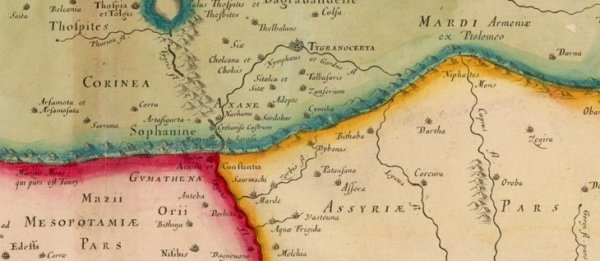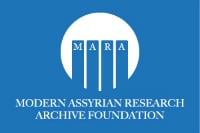The anti-Assyrians so called Arameans claim that it was the Brittish missionaries who gave the name "Assyrian" to our people after 1840. They also state that this term only refers to the geography, rather than to the ethnicity.
This article will show you many quotes that will reveal the continuity of ancient Assyrians to modern day Assyrians and thus it will expose these unfounded and false claims made by anti-Assyrians.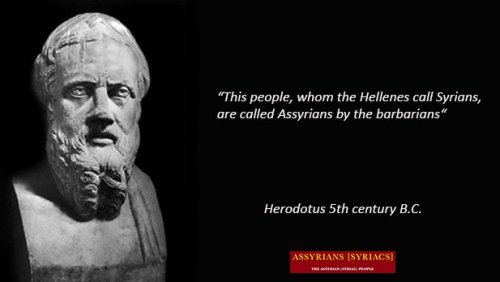
Note: The Greek historian Herodotus stated in the 5th century BC that those called Syrians by the Greeks were called Assyrians by themselves and in the East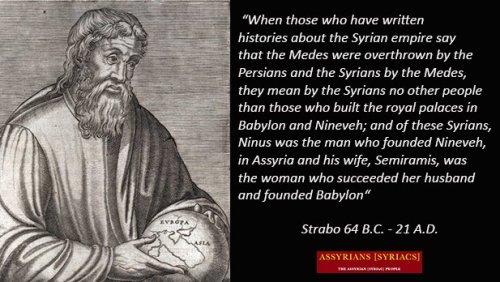
Note: The Greek geographer and historian Strabo confirms Herodotus’ statement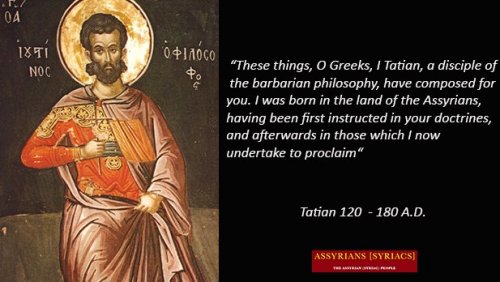
Note: The name Assyrians didn't stop being used after the fall of the Assyrian empire as some people claims, here Tatian claims that he was born in the land of the Assyrians several hundred years after the fall of the Assyrian empire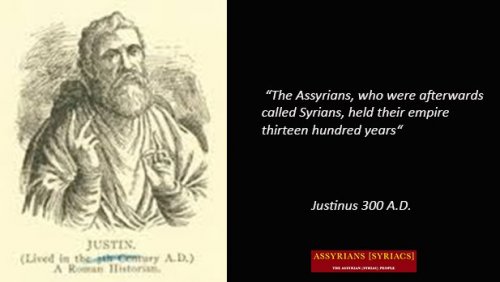
Note: Justinus, the Roman historian also confirms Herodotus and Strabo's statement 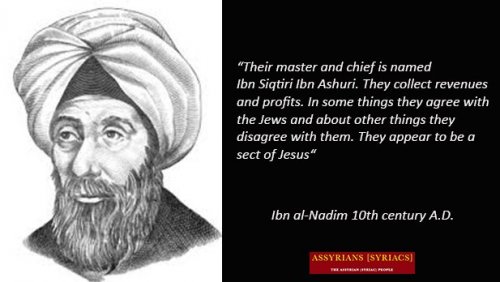
Note: The 10th century A.D. Arab scholar, Ibn al-Nadim, gives a definition of the word Ashuriyun (Arabic for Assyrians)
Note: The Syriac Orthodox Patriarch Mor Mikhael Rabo (Michael the Great) 12th century A.D. placed the Assyrians in Mesopotamia and also confirmed Herodotus, Strabo's and Justinus statement, Volume 3 Page 750 Syriac text of Chabot: "So, one can see that Syria was to the west of the Euphrates, and that the name "Syrians" is applied by way of metaphor to those who speak our language, the Arameans, of which the Syrians are only one part; the others all live east of the Euphrates, that is from the banks of the Euphrates all the way to Persia. And from the banks of the Euphrate towards the East, there have been numerous kings. In Assyria: Bel and Ninus and their many successors; in Babylon: Nebuchadnezzar, who maintained in the Aramaic language with the magicians who had been summoned for the explanation of the dream; in Edessa: family of king Abgar [...]... It was shown instead that the Chaldean and Assyrian kings who were called Syrians belonged to this people"
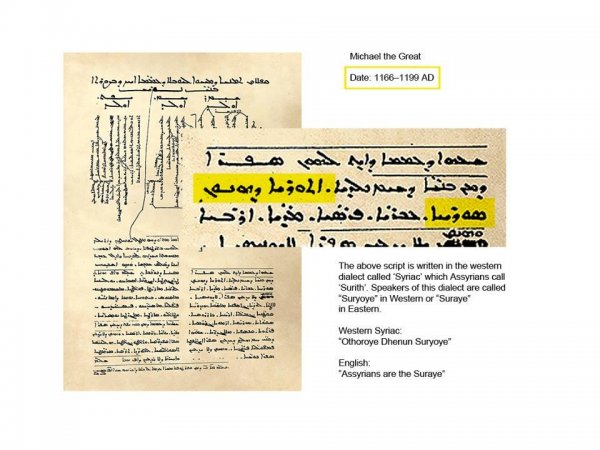
Note: The Syriac Orthodox Patriarch Mor Mikhael Rabo (Michael the Great) 12th century A.D. stating that Suryoye (Syriacs) are Assyrians, Volume 1 Page 17 Syriac text of Chabot: "Assyrians which are the Suryoye (Syriacs)"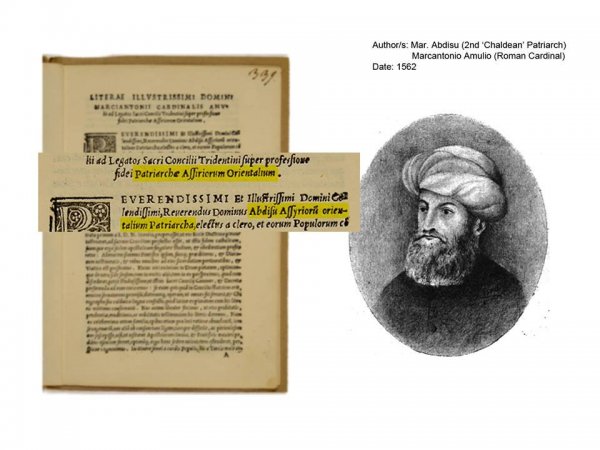
Note: This was published in 1562 AD and one of the authors was Mar Abdisu Maron ('2nd Chaldean Catholic Patriarch) and this was his title "Patriarchae Assyriorum Orientalium" (Patriarch of the Assyrians). This source was co-authored by the Roman Catholic Cardinal Marcantonio Da Mula
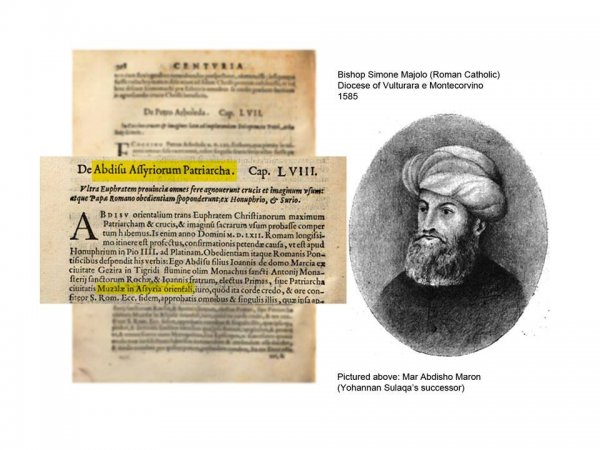
Note: Simone Majolo, Roman Catholic bishop at the Diocese of Vulturara e Montecorvino compiled together records and journals in 1585, 32 years after Yohannan Sulaqa established the new Catholic church ('Chaldean Catholic Church'). Mar Abdisho Maron is consecrated 'Patriarch of the Assyrians' shortly after Sulaqa's death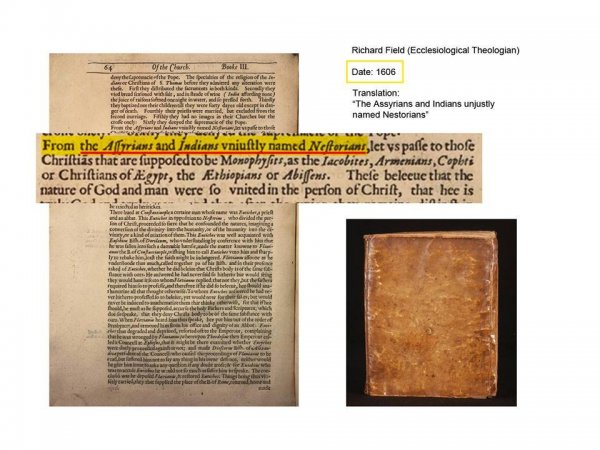
Note: 17th century Theologist Richard Field in which he confirms that the Assyrians and the Indians were unjustly named 'Nestorians'
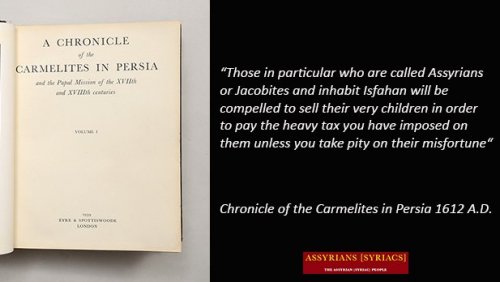
Note: During the 17th century AD, according to the "Chronicle of the Carmelites in Persia", Pope Paul V shall, in a letter to the Persian Shah Abbas I (1571-1629) of 3 November 1612 mention Assyrians and Jacobites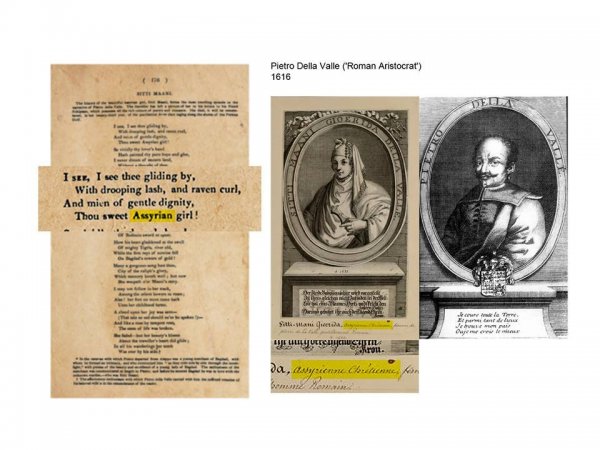
Note: In the early 17th century, a Roman aristocrat and traveller by the name of Pietro Della Valle travelled across Mesopotamia and the Holy land. He came across a beautiful Assyrian girl by the name of Sitti Maani. He fell so deeply in love with her this is how he describes her "I see, I see thee gliding by, with drooping lash, and raven curl, And mien of gentle dignity, though sweet Assyrian girl!".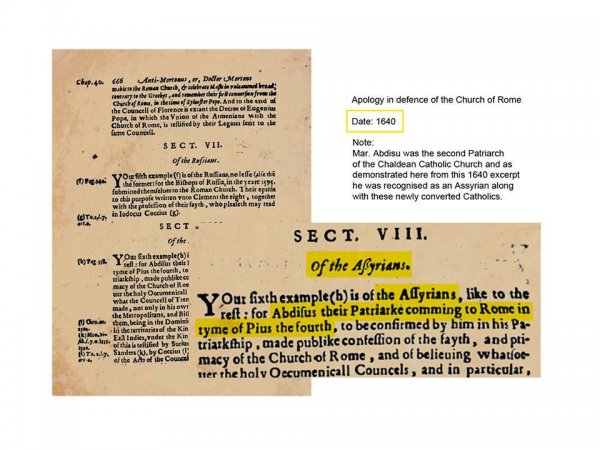
Note: After Sulaqa's martyrdom, Abdisu would be elected as the second Patriarch of the Chaldean Catholic Church, where he and his members were recognised as Assyrians. This is dated from 1640: "The Assyrians, like to the rest, for Abdisu their Patriarch coming to Rome in time of Pius the fourth, to be confirmed by him in his Patriarkship, made public confession of the faith"
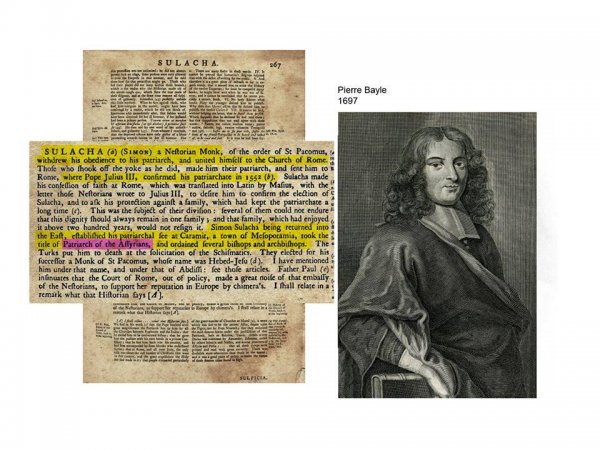
Note: Yohannan Sulaqa is the founding father of today's Chaldean Catholic Church. Sulaqa was consecrated and recognised as 'Patriarch of the Assyrians' and other titles such as 'Patriarch of Mosul and Assyria'. This is dated from 1697
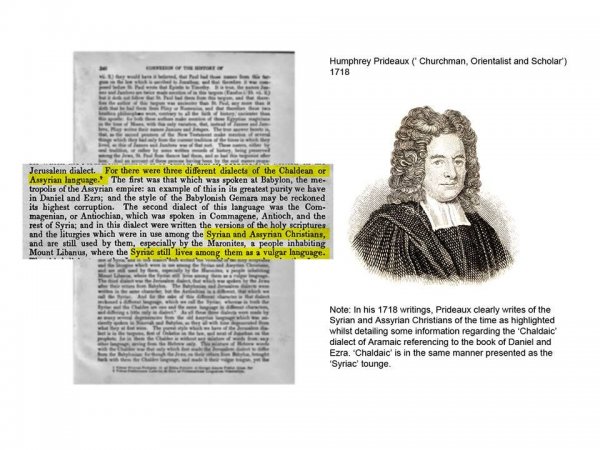
Note: Evidence dated to 1718- note Humphrey Prideaux clearly states "Assyrian Christians" 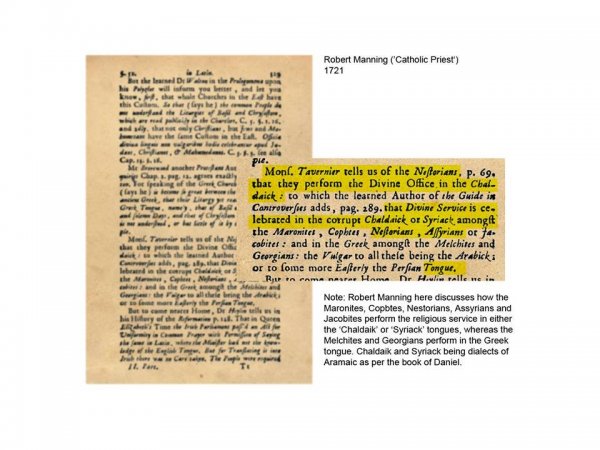
Note: In the early 18th century, Robert Manning documents the different ethnic groups and religious sects whom perform in various dialects and languages. He states: "Amongst the Maronites, Cophtes, Nestorians, Assyrians or Jacobites"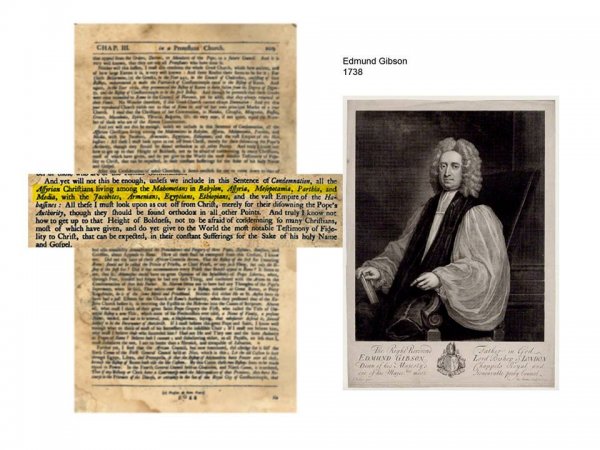
Note: According to anti-Assyrians, the reason why the people of Mosul were called "Assyrians" was due to the fact they were living in geographical Assyria exclusively. According to Edmund Gibson in 1738; he clearly recognises Assyrian Christians living in Babylon, Assyria, Mesopotamia, Parthia and Media amongst others. Obviously the term wasn't geographically applied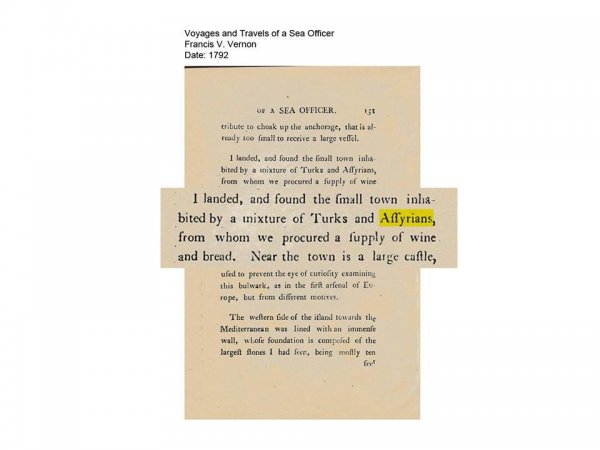
Note: This is an excerpt from a book published in 1792, as evidenced by numerous excerpts I have published from various authors within various parts of the social sphere (religious, political...etc), Assyrians have always been identified as Assyrians
Note: Joseph Emin was a famed figure within the Armenian National Liberation Movement. In his journals written in 1792 he makes mention of Assyrians and Nestorians living at the time of Prince Heraclius II of Georgia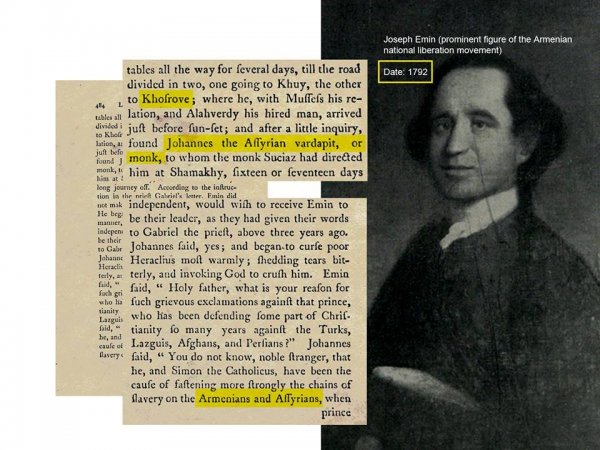
Note: Another quote of Joeseph Emin where he states "Armenians and Assyrians"
Note: Horatio Southgate visited the Syriac Orthodox (Jacobite) of Kharpout who he knew by the name of Syriani at the same time they knew themselves as Assyrians as they claimed "sons of Assour (Asshur)": "I observed that the Armenians did not know them under the name which I used, Syriani; but called them Assouri, which struck me the more at the moment from its resemblance to our English name Assyrians, from whom they claim their origin, being sons, as they say, of Assour, (Asshur,)"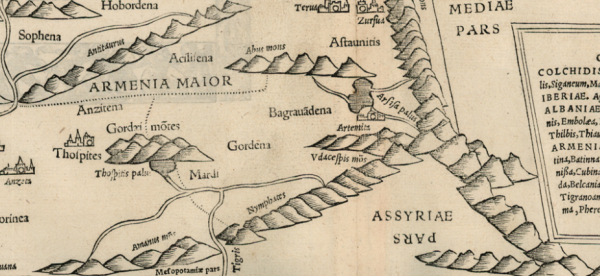
Note: Map from 1542 A.D. based on the tables from Ptolemy who was a Greek astronomer, geographer and mathematicians in the 1st century A.D, it shows that Upper Mesopotamia was known as Assyria altough the Assyrian empire had fell it still show Assyria based on the people who lived there
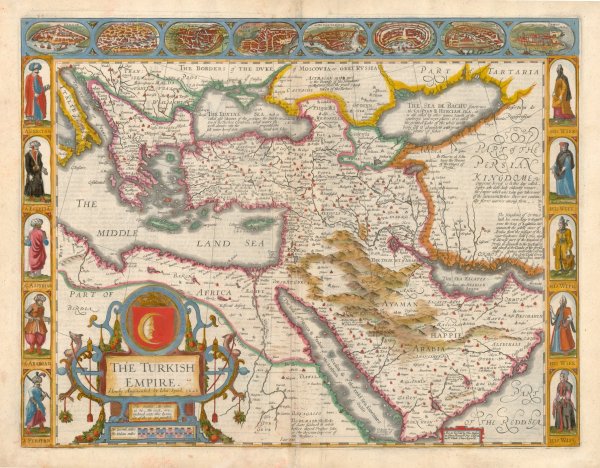
Note: A map of the Turkish Empire from the year 1626 published by John Speed an English cartographer and historian. On the left side there is a list with the peoples living in the Turkish Empire and there is also written "Assyrian"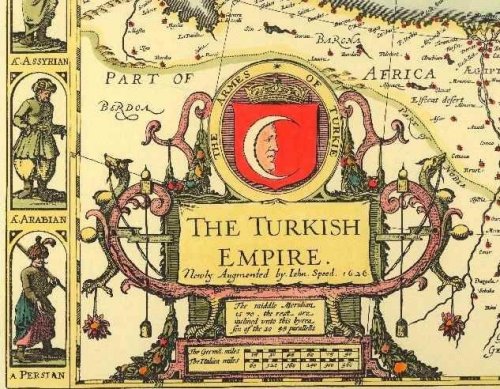
Note: Closeup on John Speed's map, where you can see that Assyrians are listed as a people


